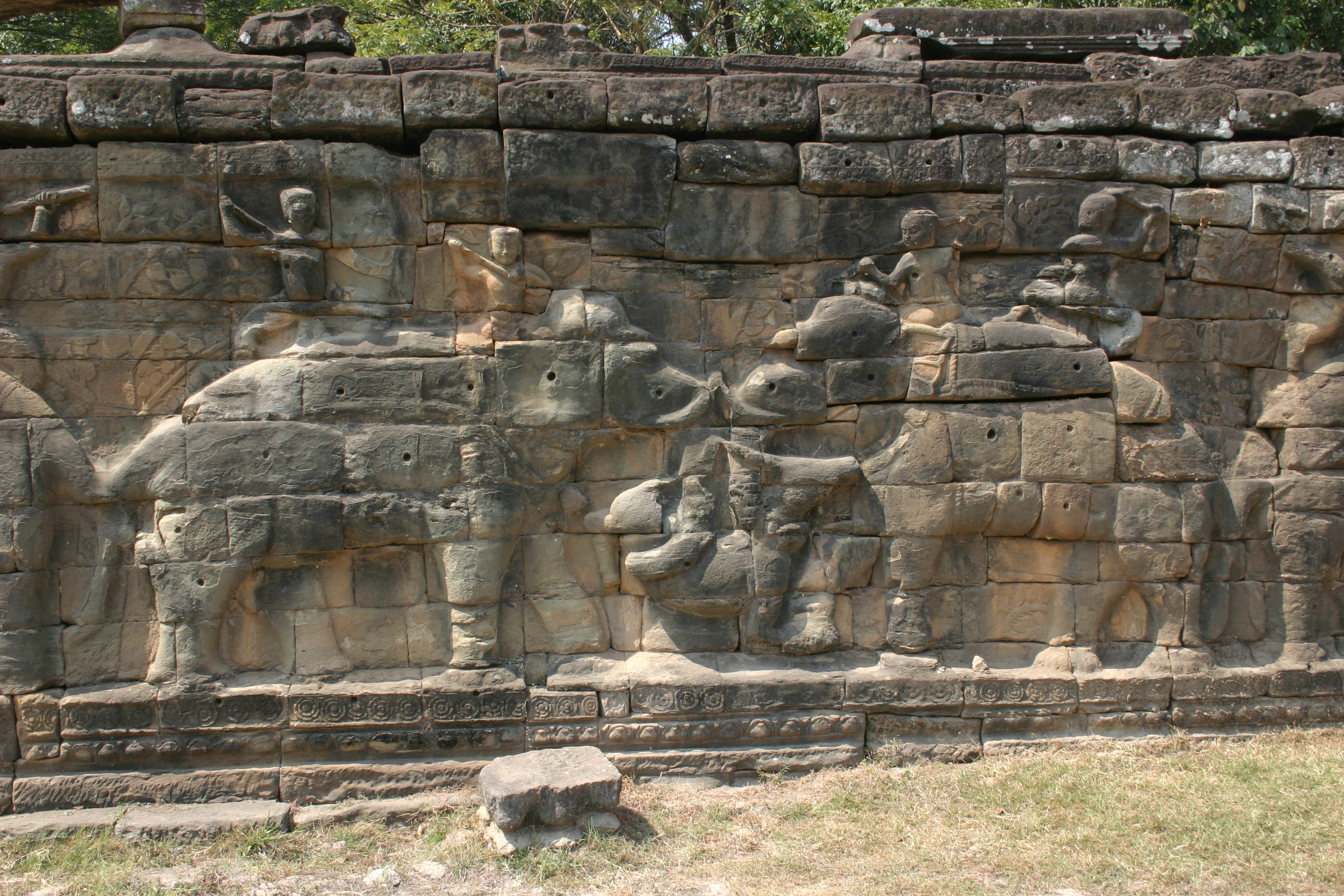Terrace Of The Elephants on:
[Wikipedia]
[Google]
[Amazon]
The Terrace of the Elephants () is part of the walled city of
 The 350 meter-long Terrace of Elephants was used as a giant reviewing stand for public ceremonies and served as a base for the king's grand audience hall. It has five
The 350 meter-long Terrace of Elephants was used as a giant reviewing stand for public ceremonies and served as a base for the king's grand audience hall. It has five
Angkor Thom
Angkor Thom ( ; meaning "Great City"), alternatively Nokor Thom ( ), located in present-day Cambodia, was the last and most enduring capital city of the Khmer empire, Khmer Empire. It was established in the late twelfth century by King Jayavarman V ...
, a ruined temple complex in Cambodia
Cambodia, officially the Kingdom of Cambodia, is a country in Southeast Asia on the Mainland Southeast Asia, Indochinese Peninsula. It is bordered by Thailand to the northwest, Laos to the north, and Vietnam to the east, and has a coastline ...
.
Description
The terrace was used byAngkor
Angkor ( , 'capital city'), also known as Yasodharapura (; ),Headly, Robert K.; Chhor, Kylin; Lim, Lam Kheng; Kheang, Lim Hak; Chun, Chen. 1977. ''Cambodian-English Dictionary''. Bureau of Special Research in Modern Languages. The Catholic Uni ...
's king Jayavarman VII
Jayavarman VII (), known posthumously as Mahaparamasaugata (, c. 1122–1218), was king of the Khmer Empire. He was the son of King Dharanindravarman II (r. 1150–1160) and Queen Sri Jayarajacudamani.
He was the first king devoted to Buddhism, ...
as a platform from which to view his victorious returning army. It was attached to the palace of Phimeanakas (), of which only a few ruins remain. Most of the original structure was made of organic material and has long since disappeared. Most of what remains are the foundation platforms of the complex. The terrace is named for the carvings of elephant
Elephants are the largest living land animals. Three living species are currently recognised: the African bush elephant ('' Loxodonta africana''), the African forest elephant (''L. cyclotis''), and the Asian elephant ('' Elephas maximus ...
s on its eastern face. The 350 meter-long Terrace of Elephants was used as a giant reviewing stand for public ceremonies and served as a base for the king's grand audience hall. It has five
The 350 meter-long Terrace of Elephants was used as a giant reviewing stand for public ceremonies and served as a base for the king's grand audience hall. It has five outwork
An outwork is a minor fortification built or established outside the principal fortification limits, detached or semidetached. Outworks such as ravelins, lunettes (demilunes), flèches and caponier
A caponier is a type of defensive structur ...
s extending towards the Central Square-three in the centre and one at each end. The middle section of the retaining wall is decorated with life size garuda
Garuda (; ; Vedic Sanskrit: , ) is a Hindu deity who is primarily depicted as the mount (''vahana'') of the Hindu god Vishnu. This divine creature is mentioned in the Hindu, Buddhist, and Jain faiths. Garuda is also the half-brother of the D ...
and lion
The lion (''Panthera leo'') is a large Felidae, cat of the genus ''Panthera'', native to Sub-Saharan Africa and India. It has a muscular, broad-chested body (biology), body; a short, rounded head; round ears; and a dark, hairy tuft at the ...
s; towards either end are the two parts of the famous parade of elephant
Elephants are the largest living land animals. Three living species are currently recognised: the African bush elephant ('' Loxodonta africana''), the African forest elephant (''L. cyclotis''), and the Asian elephant ('' Elephas maximus ...
s complete with their Khmer mahout
A mahout is an elephant rider, trainer, or keeper. Mahouts were used since antiquity for both civilian and military use. Traditionally, mahouts came from ethnic groups with generations of elephant keeping experience, with a mahout retainin ...
s.
References
External links
* Angkorian sites in Siem Reap province {{Cambodia-struct-stub